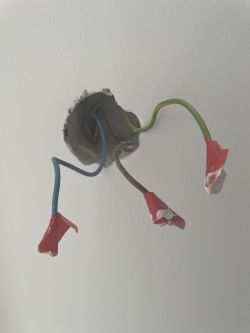Madrik wrote: 98% of electricians and fitters on construction and renovation sites will just take ordinary residential cable, use the green-yellow conductor for the working wire
No Mate, 98% was in the early 2000s, when certain solutions had only recently existed, were only just being implemented, or were not yet known.
Now, a quarter of a century later, the trend is quite the opposite (among electricians, not in the pato-development i.e. plasterers, painters who consider themselves electricians).
What kind of solutions are these? Please:
1. the PE conductor has been required at every point and section of the installation since the mid-1990s.
Some people were baffled as to why PE was required for a lighting switch. How surprised they were when a few, maybe a dozen years later, class I switches appeared, nice, "designer", blending in with the interior design, and more expensive, i.e. chosen by a smaller group of investors.
Now the investor wants such equipment, but there is no protective conductor in the installation. An informed electrician will refuse to install such a fitting, while an uninformed one, i.e. a papyrus, will install it, leaving the PE terminal "in the air".
I do not have to write what this may result in the case of damage to such a switch.
2. conductor N - here, similarly, it is not needed for a classic switch, but again, modernity has arrived - "intelligent" switches, "smart", controlled by Wi-Fi.
Some work properly without N, others require this conductor. Those working without N often require minimum power from the receiver, which may not be possible with LED sources (the lighting will flicker, glow or not work at all).
With N under the switch, we have a full range of fittings available.
3 This point solves all the ills of the points above.
This is an installation made using the no-box method, i.e. no top junction boxes, and all connections are made in deep boxes under the fittings.
Not to mention that it is an installation that is assembly-friendly (a ladder is only needed for ceiling luminaires and high wall sconces), and above all it 'automatically' ensures that all the necessary conductors are present.
So if anyone thinks that the whole house or flat will be covered only by a three-wire cable, they are sadly mistaken.
Such wires are sufficient in socket circuits, but in lighting circuits, especially for stairwells and candlesticks, five wires are the necessary minimum (as a colleague wrote above).
And painting with a marker, wrapping with tape, or shrinking with heat shrink is a sign of incompetence or even sloppiness.





